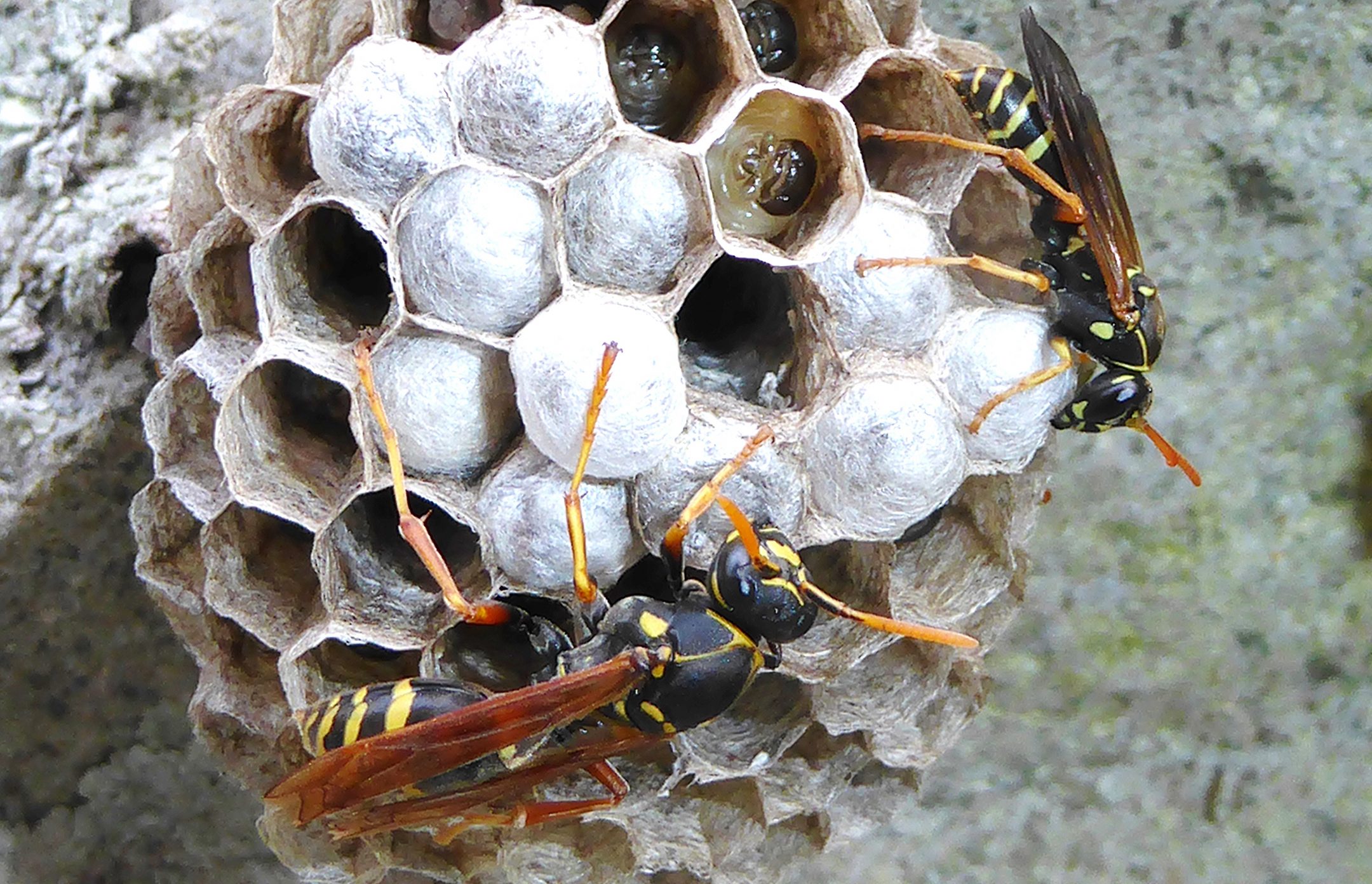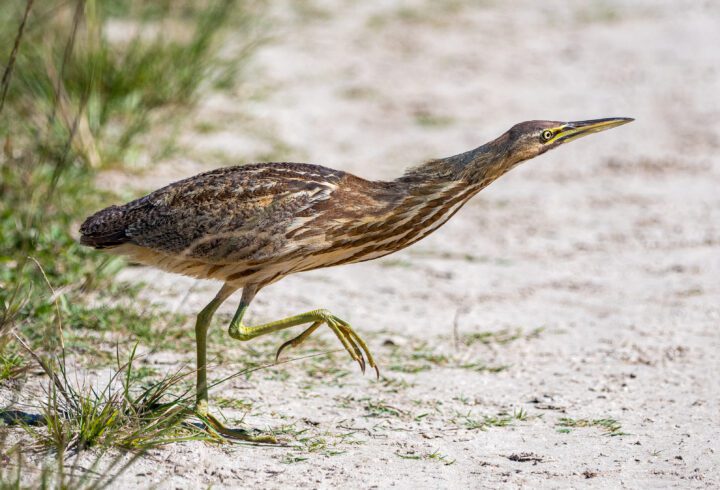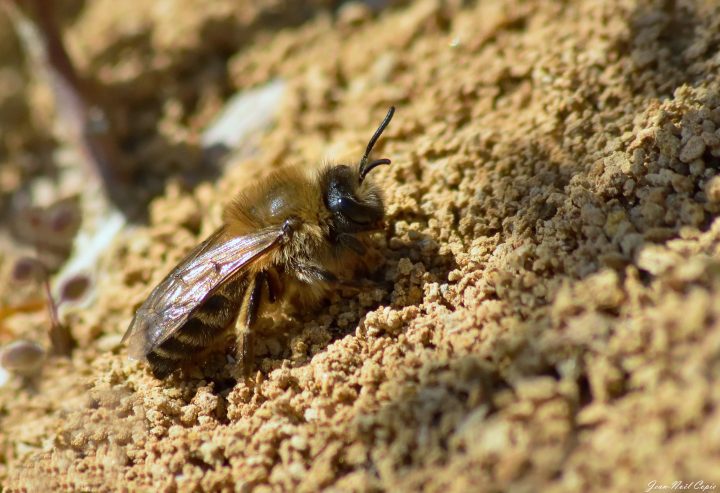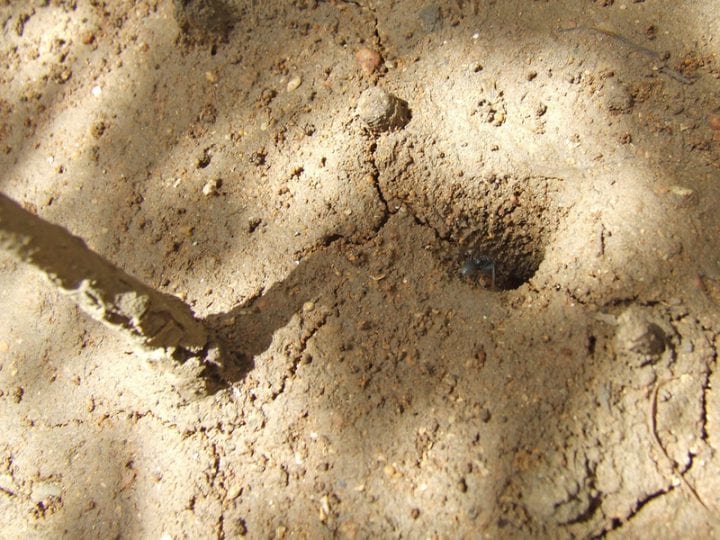Paper wasps use an oral secretion combined with masticated plant matter to create waterproof paper nests.
Introduction
When it comes to building homes, people have a lot in common with wasps. Both use a variety of materials––wood, stone, straw, grass, leaves, and so on––to construct shelters that will protect them from the elements. And both use some kind of adhesive to hold the materials together. But there are also some key differences. For one, wasps don’t have access to store-bought adhesives like wood glue or duct tape.

Artist: Emily Harrington. Copyright: All rights reserved.
The Strategy
Instead, wasps work with what they have. And they have saliva. The sticky, glue-like substance helps them to build water-resistant nests by forming a quick-drying, glue-like matrix. The saliva is primarily with a high proline content. When mixed with the in plant matter a wasp chews, it dries quickly and irreversibly to a water insoluble, water repellant surface. This allows the wasp to build a nest that will stand up to the rigors of weather and the elements.
The Potential
The quick-drying, water-resistant properties of wasp saliva could inspire the creation of more natural adhesives for a variety of applications. Furthermore, the saliva itself, or a similar human-developed substance, could be mixed with plant matter or other materials to create lightweight, highly adaptable building materials for human applications.







